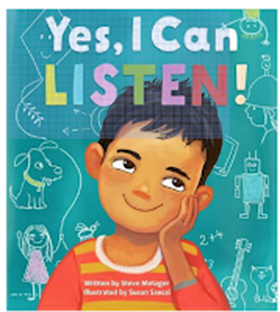Effective listening is a crucial skill that fosters understanding, empathy, and strong relationships. Teaching students to be good listeners can significantly enhance their academic and social development. Here are some friendly tips to help you nurture effective listening skills in your classroom.
1. Model Active Listening
As a teacher, you are a role model for your students. Demonstrate active listening by giving your full attention to the speaker, making eye contact, and responding thoughtfully. Show students how to listen without interrupting and to ask clarifying questions when needed.
2. Create a Listening-Friendly Environment
Establish a classroom environment that encourages and values listening. Arrange seating to promote eye contact and minimize distractions. Set clear expectations for listening during discussions, group work, and presentations. Reinforce the importance of listening respectfully to peers and teachers.
3. Teach Listening Skills Explicitly
Introduce lessons focused on the components of active listening. Teach students about body language, eye contact, paraphrasing, and asking questions. Use role-playing activities to practice these skills in various scenarios, helping students understand and apply what they learn.
4. Use Literature to Illustrate Listening
Incorporate books and stories that emphasize the importance of listening. Choose stories where characters demonstrate good listening skills or face consequences due to poor listening. Discuss the characters' actions and how effective listening could have changed the outcome.
Book List:
Wordy Bird
"Wordy Birdy" by Tammi Sauer is a humorous and
engaging picture book about a chatty little bird who loves to talk. Wordy Birdy
is always so busy talking that she doesn't listen to her friends or pay
attention to her surroundings. When her nonstop chatter leads her into a
potentially dangerous situation, her friends come to her rescue. Through this
adventure, Wordy Birdy learns the importance of listening and the value of her
friends' advice. With vibrant illustrations by Dave Mottram and a playful
narrative, this book delivers a fun and meaningful message about balancing
talking with listening.
Buy on AMAZON at: Wordy
Bird
Quiet Please, Owen McPhee!
"Quiet Please, Owen McPhee!" by Trudy Ludwig is an
engaging and insightful picture book about a talkative boy named Owen McPhee.
Owen loves to talk and always has something to say, but his constant chatter
often means he doesn't listen to others. When Owen loses his voice due to
laryngitis, he experiences what it's like to be quiet and begins to notice the
importance of listening to those around him. Through charming illustrations by
Patrice Barton and a relatable storyline, the book conveys a valuable lesson
about the balance between speaking and listening, and how being a good listener
can lead to more meaningful connections and understanding.
Buy on AMAZON at: Quiet
Please, Owen McPhee!
Yes, I Can Listen!
"Yes, I Can Listen!" by Steve Metzger is a
delightful and instructive picture book that teaches children the value of
being good listeners. Through engaging scenarios and relatable characters, the
story follows children as they learn to pay attention, follow directions, and
understand the feelings of others by listening carefully. Illustrated with
bright, colorful pictures by Susan Szecsi, the book provides practical examples
and reinforces positive behavior in a fun and accessible way. This charming
story encourages young readers to develop their listening skills, fostering
better communication and empathy in their everyday interactions.
Buy on AMAZON at: Yes,
I Can Listen!
Decibella and Her 6-Inch Voice
"Decibella and Her 6-Inch Voice" by Julia Cook is
an entertaining and educational picture book about a young girl named Isabella,
nicknamed Decibella because of her loud voice. Isabella loves to express
herself, but her booming voice often disrupts those around her. With the help
of her teacher, Isabella learns about the different volumes of her voice and
when to use each one. Through engaging text and lively illustrations by Anita
DuFalla, the book teaches children about voice modulation, appropriate volume
levels, and the importance of using an "inside voice." This story
offers practical tips and encourages self-awareness and consideration for
others, making it a valuable tool for young readers learning to control their
volume in various situations.
Buy on AMAZON at: Decibella
and Her 6-Inch Voice
Lacey Walker, Nonstop Talker
"Lacey Walker, Nonstop Talker" by Christianne C.
Jones is a charming and instructive picture book about a young owl named Lacey
who loves to talk. Lacey talks so much that she often misses out on what others
have to say and important things happening around her. When Lacey loses her
voice one day, she discovers the value of listening and realizes how much she
can learn and enjoy by paying attention to others. With delightful
illustrations by Richard Watson, the story highlights the importance of being a
good listener, balancing talking with listening, and appreciating the world
around us. This book provides a fun and meaningful lesson for young readers
about the benefits of listening and engaging thoughtfully with others.
Buy on AMAZON at: Lacey
Walker, Nonstop Talker
5. Practice Reflective Listening
Encourage students to practice reflective listening by summarizing what they have heard and reflecting on the speaker's feelings. This technique helps deepen understanding and shows the speaker that their message has been received and valued. Use pair or group activities to practice this skill.
6. Incorporate Listening Games and Activities
Make listening practice fun with games and activities. Play games like 'Simon Says,' 'Telephone,' or 'Listen and Draw,' where students must listen carefully to follow directions. These activities help students improve their listening skills in an engaging and enjoyable way.
7. Encourage Peer Feedback
Incorporate opportunities for peer feedback during classroom activities. After group discussions or presentations, have students share what they learned from their peers. This reinforces the importance of listening to understand and respect others' contributions.
8. Set Listening Goals
Help students set personal listening goals. Encourage them to focus on specific aspects of listening, such as maintaining eye contact or not interrupting. Provide regular feedback and celebrate progress to keep them motivated and aware of their improvement.
9. Integrate Technology Thoughtfully
Use technology to enhance listening skills through interactive tools and resources. Audiobooks, podcasts, and educational videos can provide diverse listening experiences. Encourage students to listen actively and discuss what they learned or found interesting.
10. Involve Families in Listening Practice
Engage families in promoting effective listening at home. Share tips and resources with parents to reinforce listening skills outside the classroom. Encourage family activities that require listening, such as storytelling, playing games, or having meaningful conversations.
By integrating these tips into your teaching practice, you can create a classroom environment where effective listening is valued and practiced daily. Teaching students to be good listeners not only enhances their character but also contributes to a positive and inclusive learning community.
Video List:
For more ideas and resources on character education, visit my blog, Lanie’s Little Learners, where I share creative, hands-on activities that promote active learning and character development. Let's work together to nurture attentive and empathetic individuals who can make a positive impact in our world.






No comments:
Post a Comment